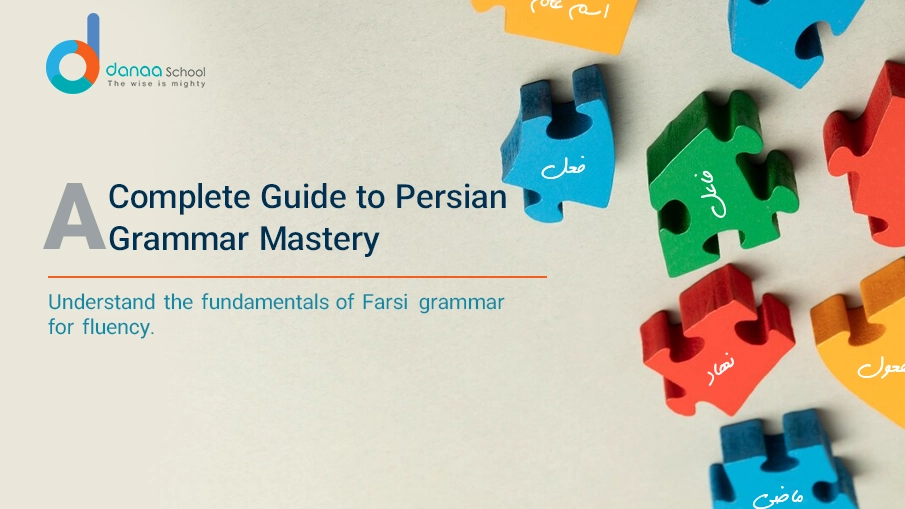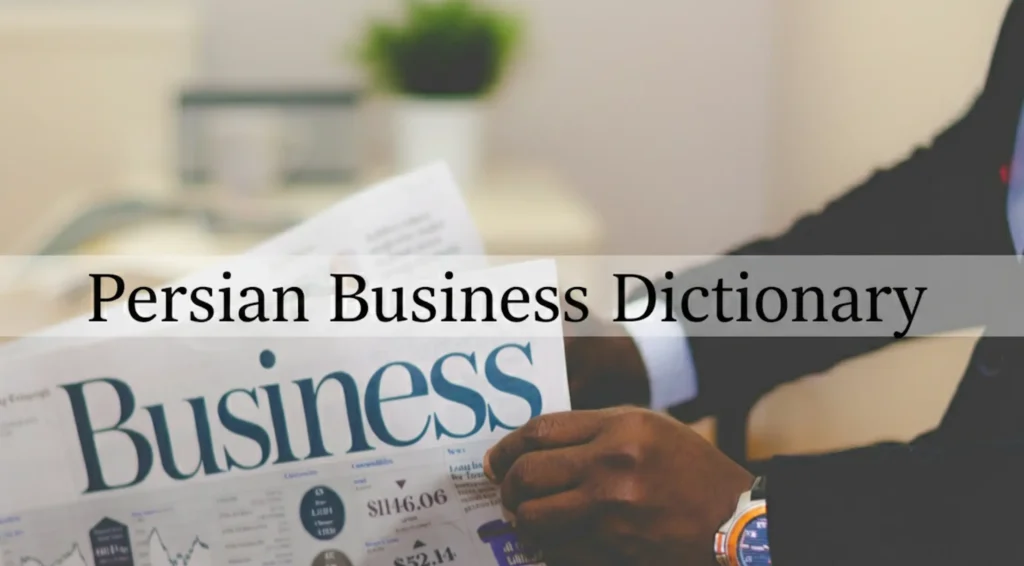Farsi, also known as Persian, is a rich and poetic language millions speak worldwide. While its grammar differs from English’s, it is logical and captivating, making it an exciting language to learn. Whether you’re a beginner or polishing your linguistic skills, understanding Farsi grammar is essential to mastering Persian. This guide details fundamental concepts like present tense, future tense, auxiliary verbs, word order, and singular forms.
Introduction to Farsi Grammar
Farsi grammar is the foundation for constructing meaningful sentences and expressing ideas clearly. Unlike English, which relies heavily on word order, Farsi’s syntax provides more flexibility. The Persian language uses a Subject-Object-Verb (SOV) word order, and verbs are central in determining sentence structure and meaning.
Understanding Farsi grammar is the gateway to appreciating Persian culture, literature, and communication. Let’s dive into its key aspects.
Why Learn Persian Grammar?
-
- Global Use: Spoken in Iran, Afghanistan, and Tajikistan, Farsi connects millions of people.
-
- Practicality: Learning grammar enhances reading, writing, and conversational fluency.
Farsi Grammar Basics: Building Blocks
-
The Role of Auxiliary Verbs in Farsi
In Persian, auxiliary verbs such as shodan (to become) and budan (to be) are essential. These verbs are used to form compound tenses, questions, and expressions. For instance:
-
- Man mikham beram (I want to go) combines the auxiliary mikham (I want) with the verb beram (to go).
Auxiliary verbs are also crucial in constructing the past continuous and present perfect tenses.
-
Understanding Word Order in Persian Sentences
Farsi follows a Subject-Object-Verb structure. Unlike English, where the verb typically comes after the subject, Persian places it at the end. For example:
-
- English: I read the book.
-
- Persian: Man ketab ra khundam. (I the book read.)
This flexibility allows for more emphasis on particular parts of the sentence.
-
Present Tense in Farsi Grammar
The present tense in Farsi is straightforward. It is formed by adding prefixes to the verb stem. Here’s how it works:
-
- The prefix mi- is added to the stem for regular present tense verbs.
-
- Mikhoram (I eat)
-
- Miraftand (They go)
-
- The prefix mi- is added to the stem for regular present tense verbs.
-
Conjugating Present Tense Verbs
Here’s an example using the verb khandidan (to laugh):
| Person | Conjugation | Translation |
| I (singular) | Mikhandam | I laugh |
| You (singular) | Mikhandi | You laugh |
| He/She/It | Mikhandad | He/She/It laughs |
Mastering present tense forms allows for basic conversational fluency, as it’s commonly used in everyday communication.
-
Future Tense in Persian Grammar
The future tense in Persian is more straightforward than in many languages. It is typically formed by using the verb’s infinitive and conjugated form of the verb khaastan (to want).
-
Structure of Future Tense
The formula for creating future tense is:
Subject + khaaham + infinitive verb
For example:
-
- Man khaaham raft (I will go).
-
- Anha khaahand amadan (They will come).
Future tense allows learners to express intentions or plans clearly.
-
Using Singular and Plural Forms in Farsi
In Farsi, nouns, pronouns, and verbs change based on singular or plural usage. Plural nouns often end with -ha or -an:
-
- Singular: ketab (book)
-
- Plural: ketabha (books)
Pronouns and verbs also adjust to reflect singular or plural forms. This is evident in verb conjugations:
-
- Singular: Miram (I go)
-
- Plural: Mirim (We go)
- Person and Pronoun Usage in Farsi
Farsi verbs are conjugated based on the subject pronoun. Here’s an overview:
| Pronoun | Meaning | Example |
| Man | I | Man miravam (I go) |
| To | You (singular) | To miravi (You go) |
| U | He/She/It | U miravad (He/She/It goes) |
Understanding how pronouns and verbs interact is key to forming grammatically correct sentences.
- The Importance of Prepositions in Farsi
Prepositions in Farsi, such as be (to), az (from), and dar (in), are critical for sentence clarity. They often appear before the noun or pronoun they relate to:
-
- Be khane raftam (I went to the house).
Politeness and Formality in Persian Grammar
Politeness is deeply ingrained in Persian culture. Formal speech often involves adding prefixes like mi- or using third-person pronouns to address someone respectfully:
-
- Informal: To chetor hasti? (How are you?)
-
- Formal: Shoma chetor hastid? (How are you?)
Understanding levels of formality can enhance communication in Persian-speaking environments.
Learning Farsi with Danaa School
Danaa School offers a structured and engaging way to learn Farsi grammar and language fluency. From beginner to advanced courses, their programs emphasize practical grammar, vocabulary, and pronunciation.
Why Choose Danaa School?
-
- Expert Instructors: Native speakers guide you through grammar intricacies.
-
- Interactive Learning: Includes live sessions, quizzes, and assignments.
-
- Tailored Programs: Adapted to individual goals and learning paces.
Danaa School’s focus on real-world applications makes it ideal for mastering Persian grammar effectively.
Find Your Ideal Teacher
At Danaa School, you can choose your Farsi tutor from a selection of qualified and experienced teachers. Begin an exceptional journey into the world of Persian language!
Book Your Trial Lesson
Tips for Learning Farsi Grammar
- Practice Regularly: Consistent practice reinforces grammar rules.
- Immerse Yourself: Listen to Persian music, watch films, and read texts.
- Join Communities: Engage with other learners for motivation and support.
- Use Apps: Tools like Danaa School’s app can make learning accessible anytime.
FAQs
How is the Farsi word order different from English?
Farsi uses a Subject-Object-Verb structure, unlike English’s Subject-Verb-Object format.
What is the role of auxiliary verbs in Farsi?
Auxiliary verbs like budan (to be) and shodan (to become) help form compound tenses and expressions.
How do you form the future tense in Farsi?
The future tense is created using the verb’s infinitive and a conjugated khaastan (to want) form.
Is Farsi grammar challenging to learn?
While it differs from English, Farsi grammar is logical and becomes more manageable with consistent practice.
What makes Danaa School effective for learning Farsi?
Danaa School provides interactive lessons, expert instructors, and a tailored curriculum for all proficiency levels.
How important is understanding formal vs. informal speech in Farsi?
It’s vital, as Persian culture values respect and the correct form enhances communication clarity.
Conclusion
Farsi grammar is the cornerstone of mastering the Persian language. Learning Persian’s unique structure and poetic elegance opens doors to cultural, literary, and personal enrichment. By understanding tenses, auxiliary verbs, and word order, learners can build a strong foundation for fluency.
Immersing yourself in Persian grammar through self-study or programs like Danaa School is an enriching journey. Embrace its beauty, and let the Persian language connect you to a world of heritage and expression. Sign up now.
Want to Learn Farsi at Danaa School?
Here are the best resources for you!







